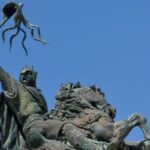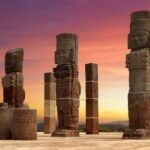We explain everything about the Aztec culture. Location of your empire, political, social, military organization and other characteristics.
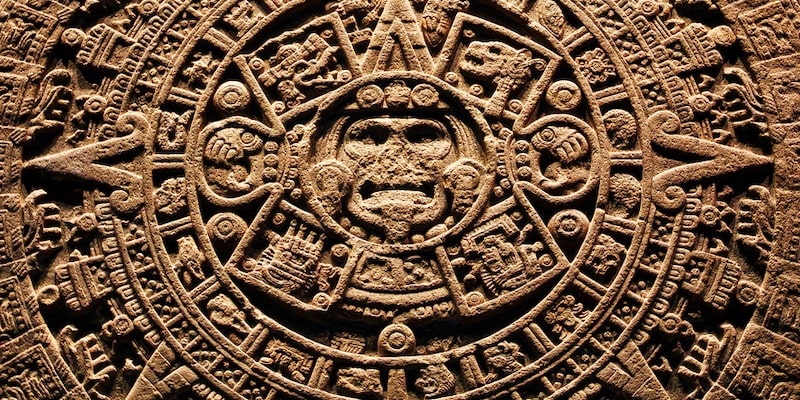
What was the Aztec culture?
One of the best-known Mesoamerican peoples from pre-Columbian times is known as the Aztecs, Tenochcas or Mexica. They were the founders of the Aztec Empire, the largest and most powerful political-territorial entity in the region until the arrival of the Spanish conquerors in the 16th century. It was located in the south-central region of current Mexican territory.
The Aztecs founded the city of Tenochtitlán in the Valley of Mexico in 1325 AD. C. and, in just one hundred years, they gave rise to the Aztec Empire, which ruled and colonized the central Mesoamerican region in a triple alliance between the peoples of Mexico-Tenochtitlán (Mexicas or Tenochcas), Texcoco (Acolhuas) and Tlacopan (Tepanecas). In fact, Tenochtitlán was the capital of the empire which expanded significantly until the arrival of the Spanish.
Each of these populations was a altépetl distinct, that is, an organized political, social and religious entity. United together they formed the same imperial State that invaded, enslaved and dominated neighboring towns and imposed on them, among other things, his language (Nahuatl) and his religion (the cult of the solar god and warrior Huitzilopochtli).
Therefore, once the Spanish conquerors arrived in the 16th century, it was very easy to convince rival or subject populations to ally with the Europeans in the war against the Aztecs. This was the decision of the Tlaxcalans and the Totonacs, even though they themselves later fell under the rule of the Spanish.
It is estimated that, by the time of his fall, The Aztec Empire ruled over a population of between five and six million people and with a population density of around 25 inhabitants per square kilometer (in 207,200 square kilometers of surface).
Other Mesoamerican cultures were: Teotihuacan culture, Toltec culture, Mayan culture, Olmec culture, Totonac culture, Zapotec culture, Mixtec culture.
Key points
- The Aztec or Mexica culture developed in the Valley of Mexico in the 14th century AD. C. and formed an empire centered on the city of Tenochtitlán.
- Its highest political authority was the huey-tlatoani and its society was divided into three strata: the nobles, the commoners and the slaves.
- It was a warrior society that formed a triple alliance with Texcoco and Tlacopan, conquered extensive lands and practiced human sacrifice.
- Their agriculture was based on the chinampas system and their religion focused on the cult of the solar god Huitzilopochtli.
See also: Mesoamerica
Geographic location of the Aztecs
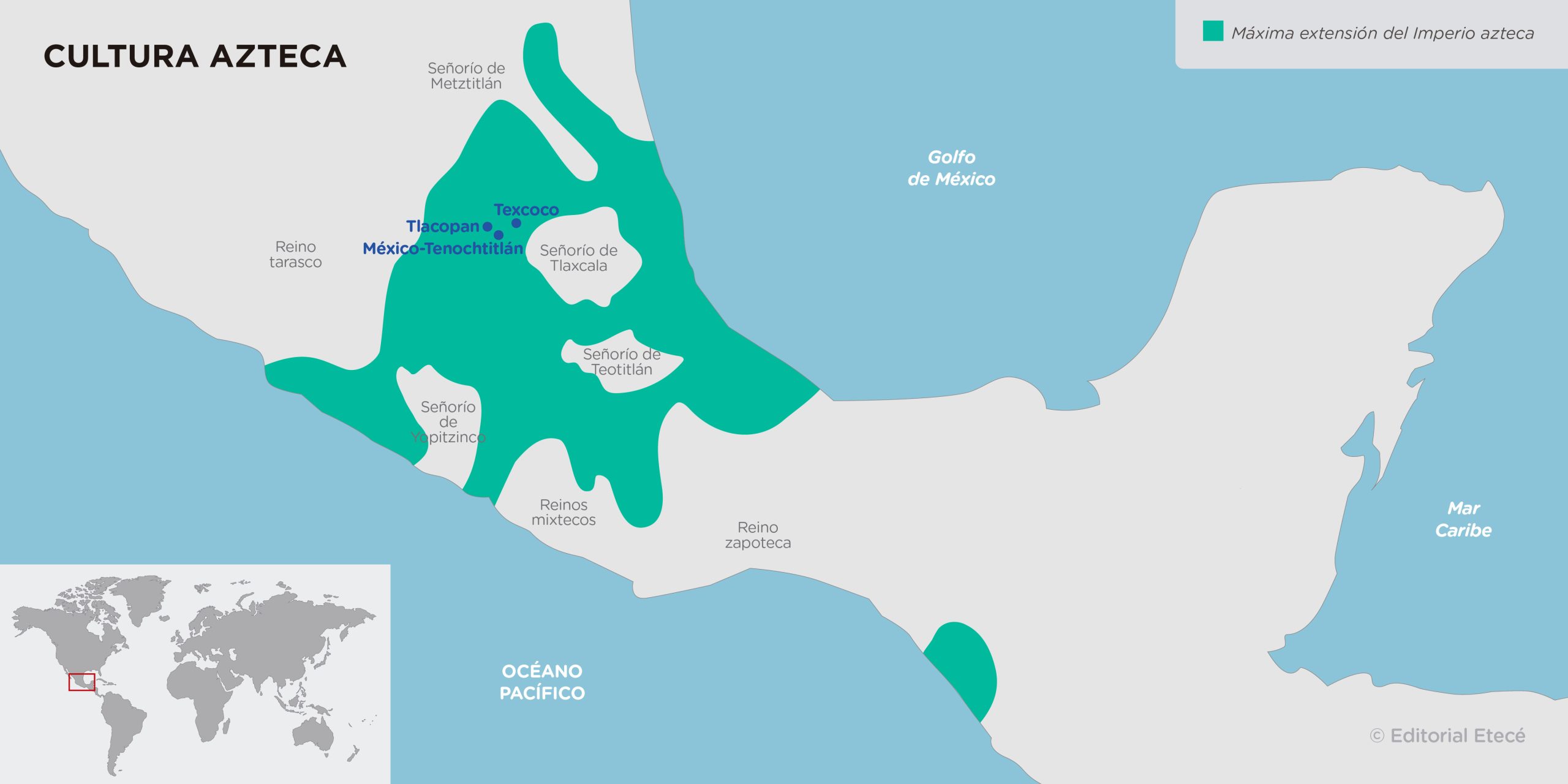
It is believed that the Aztecs were originally a nomadic tribe from northern Mexico which was established in the Valley of Mexico after destroying the Toltec city of Tula in the 12th century AD. c. In 1325 AD. C. they founded the city of Mexico-Tenochtitlán in the center of the current territory of Mexico, where Mexico City, the country's capital, is currently located.
From there they expanded to the surrounding area, and at the beginning of the 15th century they founded the empire that, at its greatest extent, It came to cover the current states of Mexico, Morelos, Hidalgo, Veracruz, Puebla, Guerrero and part of Oaxaca and Chiapas in addition to a small territory of Guatemala. In this region they had diverse ecosystems and climatic conditions and therefore different natural resources that they could take advantage of.
Thus, at the beginning of the 16th century, the Aztecs, governed by Moctezuma II, exercised imperial control over a large region and had converted Nahuatl into the lingua franca of practically all of Mesoamerica.
Characteristics of Aztec culture
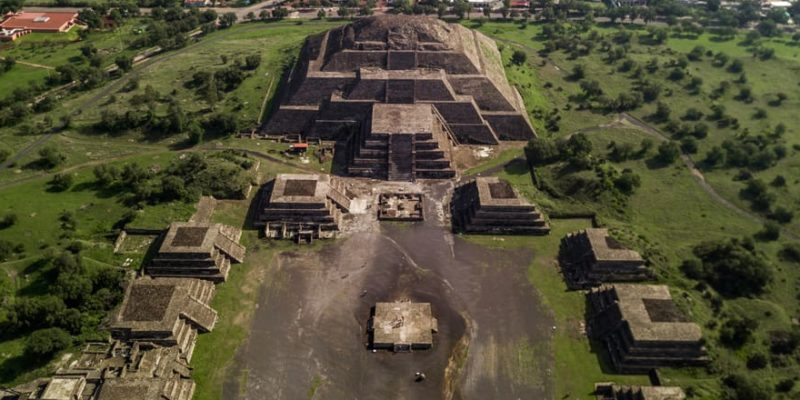
The Aztecs were a fundamentally warrior and religious people, whose main patron was the god of the Sun, Huitzilopochtli. In his honor and that of other gods made human sacrifices, whose victims were the warriors of the conquered ethnic groups to which they also imposed a system of tributes that centralized a large amount of wealth in Tenochtitlán.
His warmongering character was reflected in the clothing of his warriors adorned with feathers, animal skins and other ornaments that also showed the hierarchy of the individual within society. They mastered a type of metallurgy based on copper, gold and silver and used obsidian. With these materials they made ornaments and weapons for war.
They also had a pictographic, ideographic and phonetic writing that served documentation purposes, their own metric system that allowed them to build numerous architectural works, and astronomical knowledge focused on the observation of the Sun, Moon and Venus that was manifested in a ritual calendar.
The Aztec Empire inherited various traits from preceding cultures like the Teotihuacans. In fact, they made the city of Teotihuacán, already abandoned and in ruins, a place of religious pilgrimage where they carried out rites and offerings.
Political and social organization of the Aztecs
The Mexica society of Tenochtitlán was divided into twenty clans or calpullis which grouped together people linked by kinship and who belonged to the commoners sector. Each clan had an authority or calpullecan assigned territory and its own temple.
Aztec society was divided into three strata or social classes:
- Nobles (pipiltin). They controlled the government, war and religion, given the theocratic nature of Mexica society.
- Commoners (macehualtin). They worked as artisans, farmers and merchants and made up the common people.
- Slaves (tlatlacohtin). They were generally prisoners of war, criminals or people who paid their debts to third parties through servitude.
In each altépetl justice and local administration were exercised through institutions designated for this purpose. On the other hand, unsolvable problems could be escalated to judicial courts in Mexico-Tenochtitlán and Texcoco. There, justice was administered in the royal palace by the imperial authorities. However, among the common people it was taught by a tecuhtli or judge who was in office for one year.
Above the tecuhtli there was a court of three life judges, appointed by a figure in charge of the executive power called cihuacoatlwho co-governed with the highest political authority of the empire, the huey-tlatoani (“great orator”). The latter was chosen from a group of nobles of the ruling lineage by a council made up of representatives of the nobility.
Aztec economy

The Aztec economy was very prosperous, especially during the height of the empire. In particular because the dominion of neighboring towns provided the opportunity to obtain cheap labor and abundant.
The cultivation of the land was distributed among the clans or calpullis the State and the priests. Thanks to its advanced agricultural techniques, the waters of Lake Texcoco were used through a cultivation system called chinampaswhich used lake mud as fertilizer on elevated fields and allowed sowing several times a year.
In addition, they practiced trade, mainly barter and long-distance exchanges managed by merchants called pochtecasas well as the slave trade. They stood out in artisanal production especially in the use of obsidian to make utensils and weapons and in the textile industry through the use of cotton and maguey fibers.
Religion of the Aztecs
Like other Mesoamerican cultures, the Mexica had a worldview that was the result of the inheritance and hybridization of previous cultures. Although It was organized around the veneration of a specifically Mexica solar god: Huitzilopochtli there is abundant evidence of the veneration of Toltec gods, such as Tláloc, Tezcatlipoca and Quetzalcóatl.
As the empire grew, new deities were worshiped. This was because the gods of the assimilated populations were incorporated into the Aztec pantheon. To do this, Aztec mythological stories were linked with the gods of the conquered territories. This resulted in a religion full of complex stories of kinship between the gods the result of syncretism between civilizations.
The religion of the Aztecs It was a central element of their culture. Rites of offering to the gods and human sacrifices (generally of prisoners of war) were common and contributed to the consolidation of castes or military orders. The priests were in charge of performing and supervising the rituals according to the dates of the calendar.
Military organization of the Aztecs
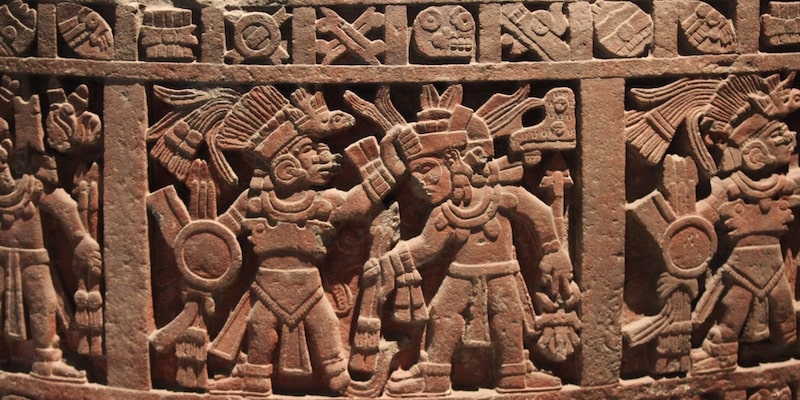
The Aztecs had a formidable military organization, which guaranteed them control of the region during his imperial period. They relied on the intelligence work of traders and merchants, who provided key information prior to the invasions. Clashes generally lasted until their enemies gave in and accepted submission.
It is also possible that marriage with noble sectors of some lordships gave them the possibility of assimilating territories into the empire without the need for a military conquest.
The Mexica army was made up of numerous commoners (yaoquizqueh), who had basic military training, and a smaller number of professional warriors from the nobility, organized into different orders according to their performance and their war tradition.
War was fundamental to the Aztec way of life. For example, It was the only factor of social advancement for commoners so men received military training from an early age. Furthermore, it was the main activity from which they obtained victims for sacrifices to the gods (for example, the so-called “flower wars”).
Their preferred combat weapons were obsidian-edged swords (macuahuitl), the spears (tepoztopilli) and the shields (yaochimalli). They also wore cotton armor (ichcahuipilli). It is said that Moctezuma II owned a luxurious armory whose weapons were made with precious stones.
document.addEventListener(“DOMContentLoaded”, (e) => { var sliderContainer, slider; sliderContainer = document.getElementById(‘block_7e07bc55b3a28443e295a09a5af92701’); if (typeof initSlider !== ‘function’) { console.log(‘Swiper haven\’t been loaded’); sliderContainer.className += ‘ fw scroll-snap’; return; }; options = { direction: ‘horizontal’, speed: 1000, slidesPerView: ‘auto’, // slidesPerGroup: 1, centerInsufficientSlides: true, // centeredSlides:true, spaceBetween: 15, breakpoints: { 720: { // centeredSlides: false, // slidesPerGroup: 2, spaceBetween: 25 }, }, pagination: { el: ‘.swiper-pagination’, type: ‘bullets’, clickable: true }, } slider = initSlider(sliderContainer, options); })
References
- Britannica, Encyclopaedia (2023). Aztec. Encyclopedia Britannica. https://www.britannica.com/
- Cartwright, M. (2014). Aztec civilization. World History Encyclopedia. https://www.worldhistory.org/
- López Austin, A. & López Luján, L. (2001). The indigenous past. Economic Culture Fund-El Colegio de México.
- Manzanilla, L. & López Luján, L. (coords.) (2001). Ancient History of Mexico. 4 vols. National Institute of Anthropology and History.
- VV.AA. (2024). The Aztecs. Archeology and History Magazineno. 53.


